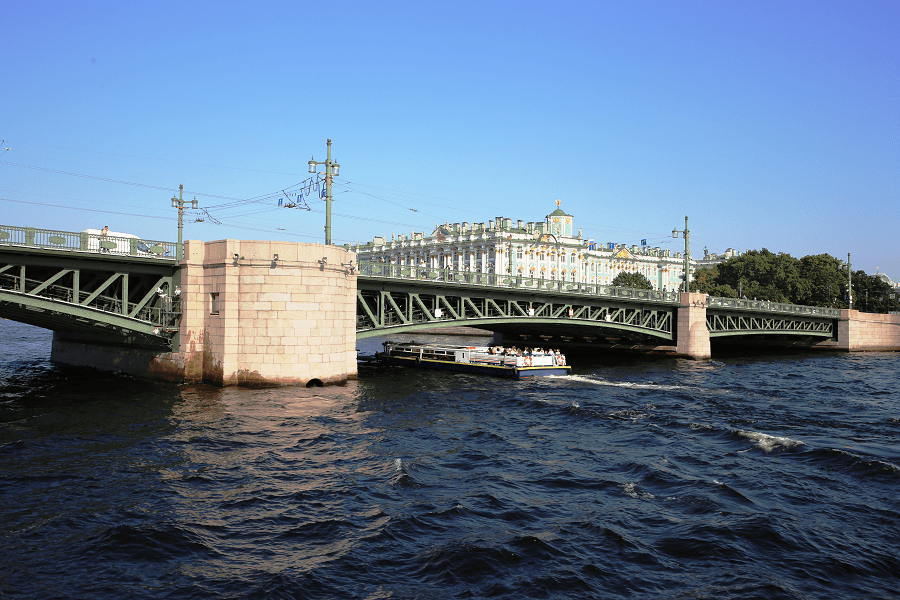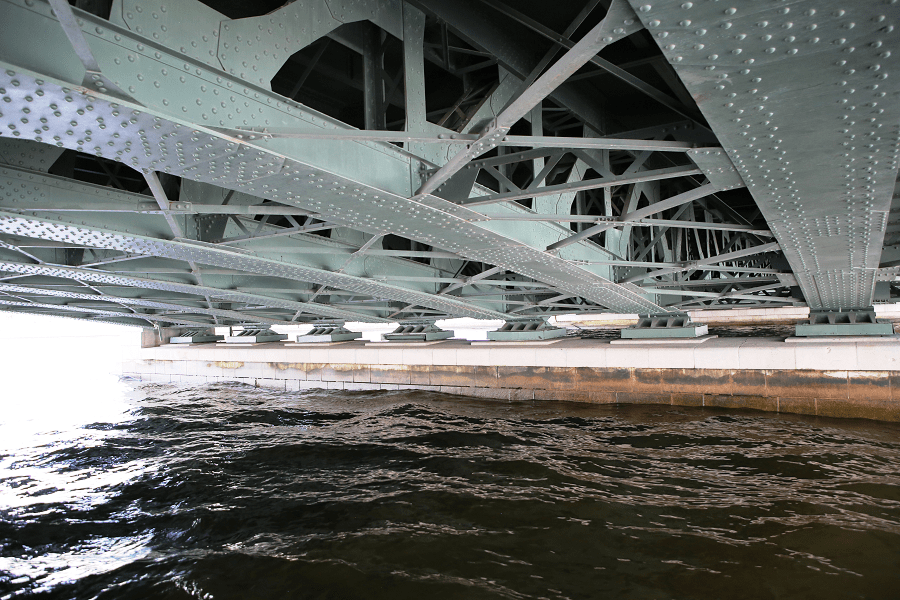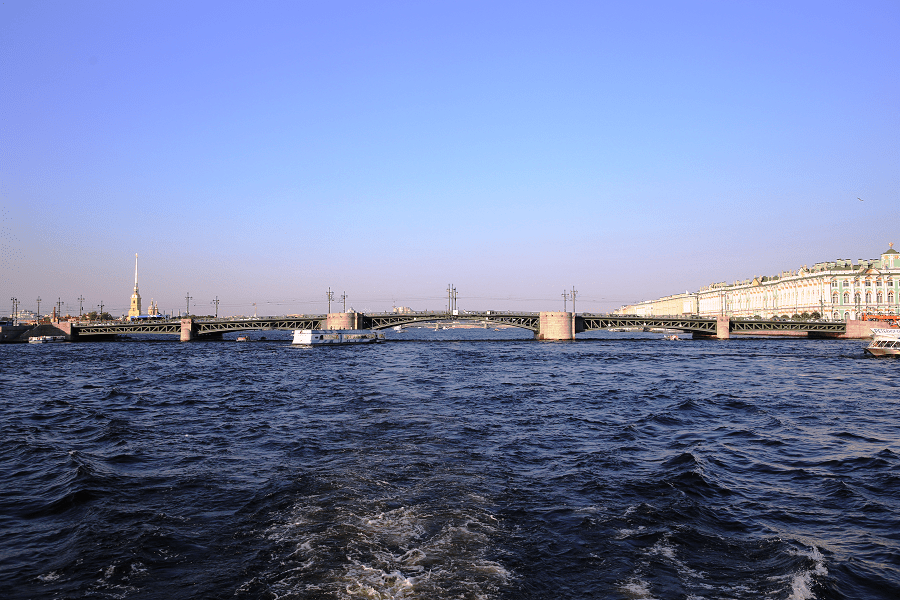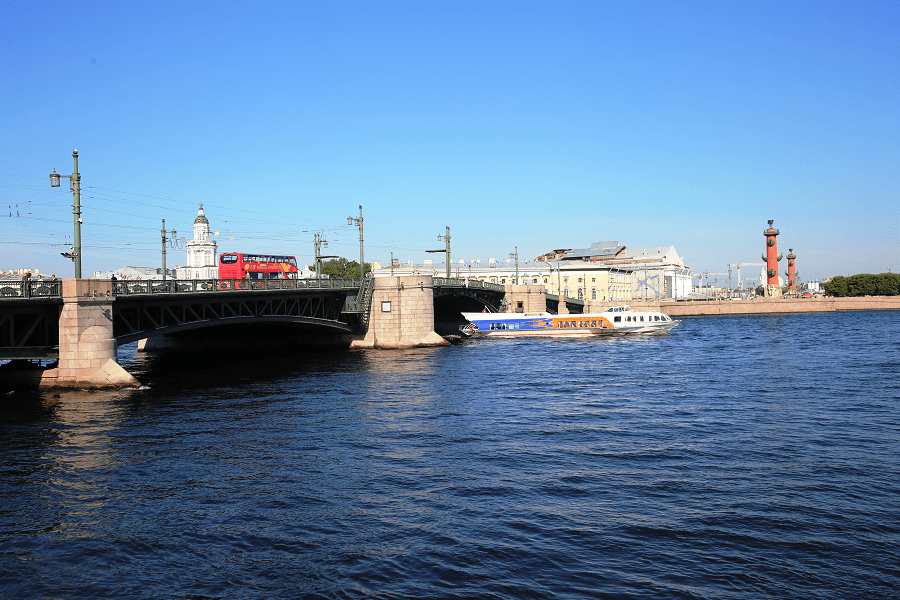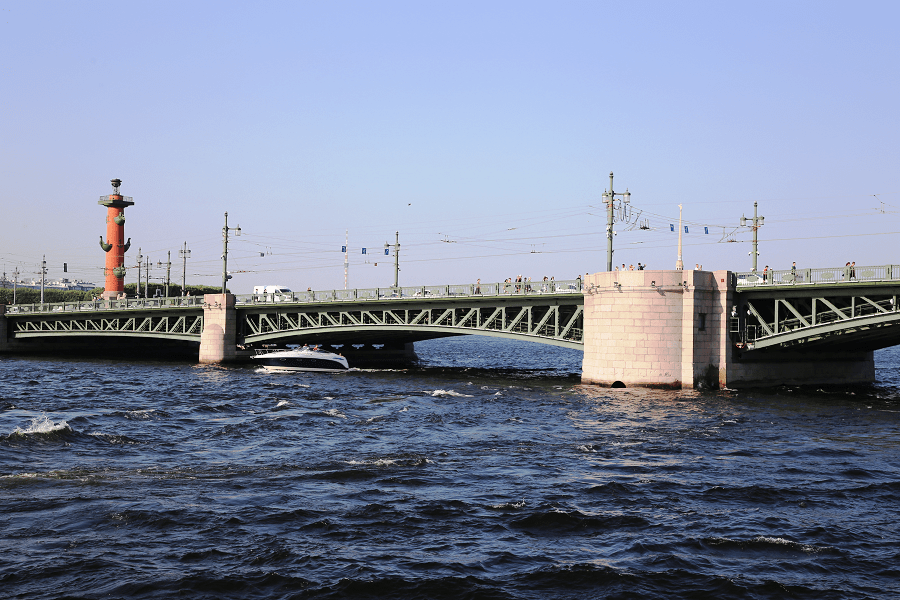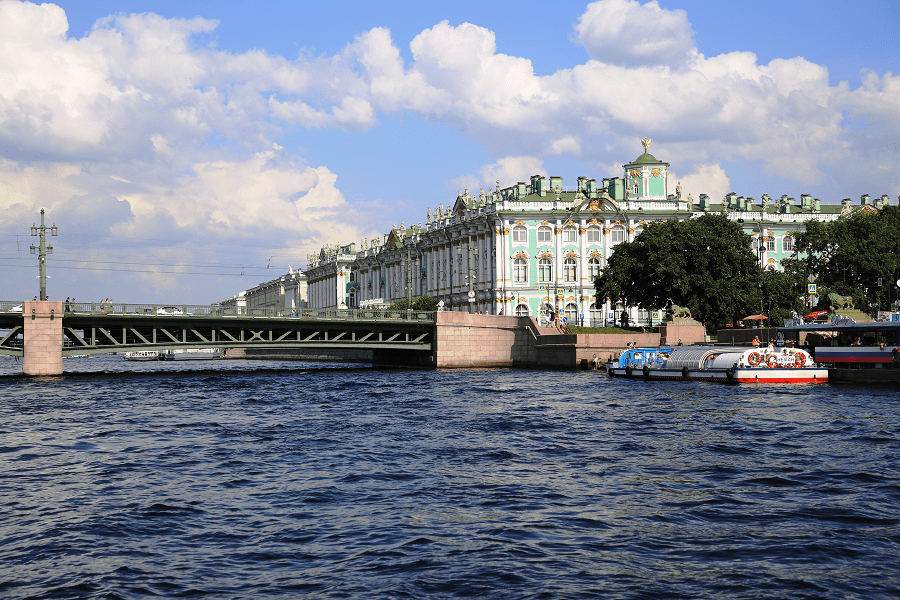The Palace Bridge is a road metal drawbridge across the Neva River (Bolshaya Neva) in St. Petersburg. It connects the central part of the city (Admiralteysky Island) and Vasilyevsky Island. An object of cultural heritage of Russia of regional significance.
The length of the bridge is 250 m (255 m), the width is 27.7 m. It consists of five spans. The divorced central two-winged span of the Palace Bridge is one of the symbols of the city.
The bridge connects Palace Passage, Palace Embankment and Admiralteyskaya Embankments with Vasilyevsky Island and its Spit (University Embankment).
Upstream is the Trinity Bridge, below – Blagoveshchensky Bridge.
The nearest metro station is Admiralteyskaya.
The name of the bridge has been known since 1851 and is given by the nearby Winter Palace and Palace Embankment.
Originally, after Emperor Nicholas I lifted Peter the Great’s prohibition to construct bridges across the Neva, a temporary pontoon bridge was set up about 50 metres downstream from the current structure.
Construction of the final bridge began at the end of 1911. Cast iron arches, made by the Kolomna Plant, arrived by water and were installed on site. Two trusses were assembled directly on the installed span and erected by crane.
In November 1915, pedestrian traffic was opened on the bridge.
The final repair of the Palace Bridge was started on October 21, 2012, without the construction of temporary crossings, which greatly complicated the already tense traffic situation on Vasilyevsky Island. On October 19, 2013, it was inaugurated after reconstruction.
The engine which opens up 700 ton of each bridge flights consists of motors, huge gears (some of which are still the original ones) and thousand-ton counterweights. The mechanism works reliably, but sometimes small incidents occur. In October 2002 one of the gear teeth broke off: consequently the drawing was halted in the middle, and ship passage was delayed.




